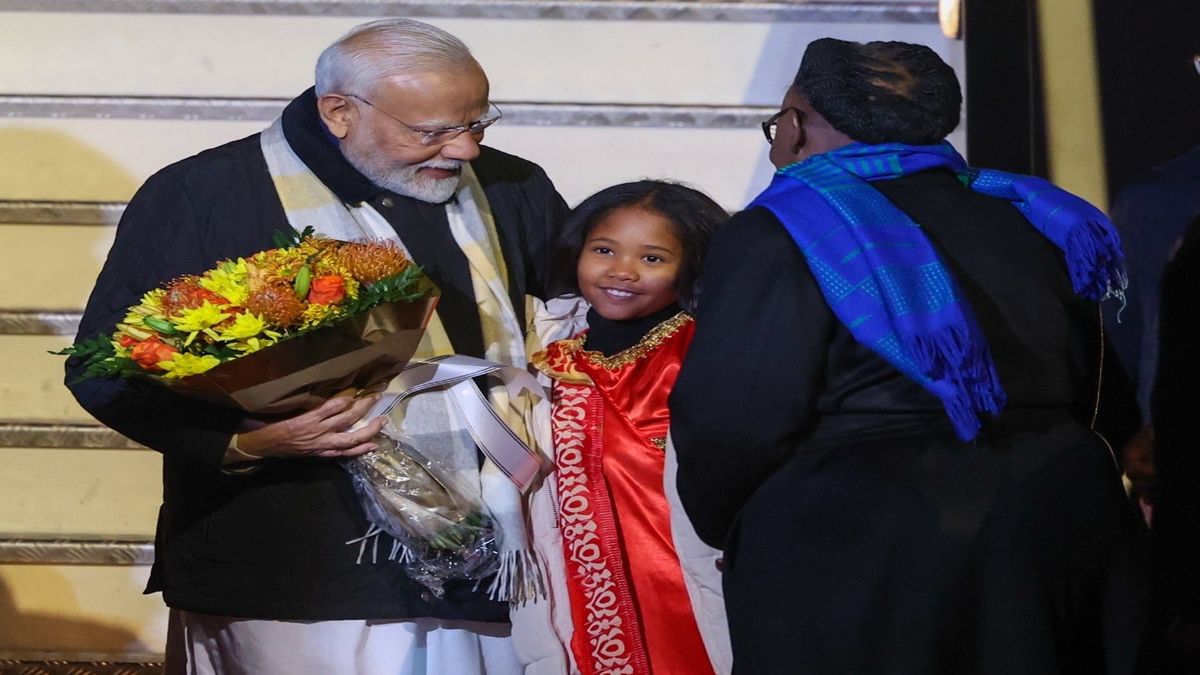

Namibia's significance to India extends beyond simple trade figures, encompassing strategic resources, historical ties, and growing cooperation across various sectors. Prime Minister Narendra Modi's visit to Namibia on July 9, 2025, the first by an Indian Prime Minister in nearly three decades, underscores the importance India places on this relationship.
Historical Ties and Strategic Importance
India's connection with Namibia dates back to its support for Namibia's liberation struggle against South African rule. India was among the first nations to raise the issue of Namibian independence at the United Nations in 1946. This historical solidarity has fostered a strong bond between the two nations, with Namibia viewing India as a dependable and trusted friend. Namibia's support for India's global governance reform agenda, including UN Security Council expansion, further strengthens this partnership.
Namibia's strategic importance to India is largely due to its wealth of natural resources. The country is a significant producer of uranium, a vital resource for India's expanding civilian nuclear energy program. Additionally, Namibia possesses reserves of lithium, cobalt, rare earth minerals, zinc, copper, and gem-quality diamonds – all crucial for India's growing economy and its transition to clean energy.
Economic Cooperation: Trade and Investment
Bilateral trade between India and Namibia has seen steady growth, reaching approximately $814 million in 2023-24. While figures vary depending on the source and time period, the trend indicates increasing economic engagement. In 2024-25, two-way trade touched $568.40 million, with India's exports at $327.21 million and imports from Namibia at $241.19 million. India's exports to Namibia include pharmaceuticals, machinery, textiles, mineral oil, and cereals, while Namibia's exports to India are primarily nonferrous metals, ores, and metal scraps.
Indian investments in Namibia are estimated at nearly $800 million, largely concentrated in the mining sector, including zinc and diamond processing. Vedanta Resources of India, for example, acquired the Skorpion Zinc Mine in 2010. These investments contribute to job creation and technology transfer in Namibia. Sectors such as mining, energy, infrastructure development, health, education, agriculture, and trade offer potential for increased bilateral cooperation.
Diamonds, Uranium, and Critical Minerals
Namibia is known for its rich marine diamond deposits. While Namibia does not currently sell rough diamonds directly to India, instead routing them through global trade hubs like London and Antwerp, there is potential for more direct engagement. Direct diamond exports could significantly benefit India's diamond industry. In 2023, Namibia's diamond exports to India were valued at $106 million.
As the world's third-largest producer of uranium, Namibia is a key partner for India as it seeks to expand its nuclear power capacity. India is actively looking at exporting uranium from Namibia. Discussions on long-term uranium supply agreements are likely to be on the agenda during high-level visits.
Besides uranium and diamonds, Namibia holds significant reserves of lithium, cobalt, and rare earth elements, which are crucial for India's ambitions in electric vehicles, battery storage, and renewable energy. However, it is important to note that Namibia has, at times, placed export bans on unprocessed critical raw materials, including lithium, to encourage local refining.
Expanding Cooperation
India and Namibia are exploring expanded cooperation in various sectors, including mining, energy, health, agriculture, and infrastructure development. Negotiations for a Preferential Trade Agreement between India and the Southern African Customs Union (SACU), with Namibia playing a coordinating role, are ongoing. Other potential areas of collaboration include digital payments, agriculture, and pharmaceutical development.
India has also been providing development assistance and capacity-building support to Namibia through scholarships, defense training programs, and technical cooperation. The Indian Air Force Technical Team has been training Namibian helicopter pilots since 1996, showcasing enduring defense cooperation. An 'India Wing' has been established at the University of Namibia's Ongwediwa campus through a grant of approximately $12 million from India.
Furthermore, cultural ties between the two countries are flourishing through regular cultural events, yoga sessions, and artistic exchanges. A notable symbol of the friendship is the translocation of cheetahs from Namibia to India in 2022, the first intercontinental transfer of a major carnivore species.
Prime Minister Modi's visit to Namibia reaffirms the strong relationship between the two countries, paving the way for deeper cooperation in trade, investment, energy, and strategic minerals. The focus on critical minerals and energy security aligns with India's growing needs and Namibia's potential as a key supplier. This partnership is poised to strengthen India's presence in Africa and contribute to mutual prosperity.